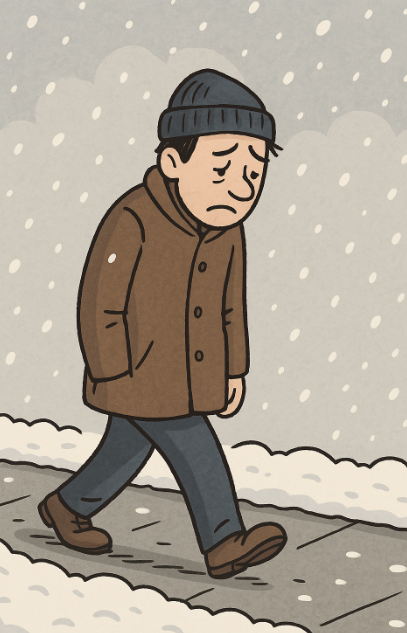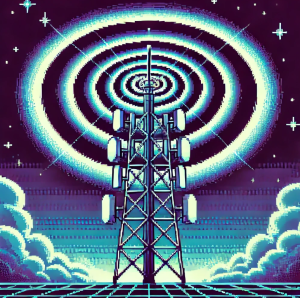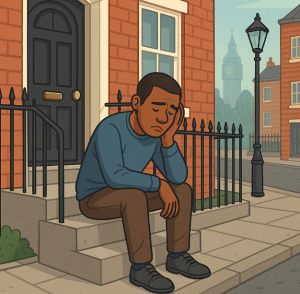
The Holiday Suicide Myth: What the Research Really Shows About Seasonal Risk
Every year, as the holidays approach, headlines warn of a “seasonal spike” in suicide. It’s a powerful narrative: loneliness, financial strain, family conflict, and the pressure to feel joyful are easy villains to blame. But despite its lasting grip on the American imagination, the narrative is wrong. Decades of data from toxicology reports, emergency department visits, psychiatric admissions, and national mortality records all point toward a very different and far more complicated reality.
The four peer-reviewed studies reviewed here collectively dismantle the myth of holiday-driven suicide spikes. Instead, they paint a nuanced picture of seasonal rhythms, protective factors, delayed risk, and the ways social expectations shape emotional crises. Understanding these patterns isn’t just an academic exercise; it can help public health practitioners, clinicians, community organizations, and families better target prevention efforts at the moments when people are most at risk.
This synthesis brings together evidence from:
- National Poison Data System (U.S.) – suicide attempts by poisoning, 2006–2010
- Seasonal psychiatric hospitalization and crisis behavior datasets
- A major population-level analysis of holiday suicide myths in the U.S. and U.K.
- Foundational research on “broken promise” theory and post-holiday rebound effects
Together, these studies show that the holidays themselves may be protective. But the days and weeks after the holidays can carry an elevated risk.
Key Takeaway #1: There Is No Rise in Suicide on Major U.S. Holidays
The largest available dataset, more than 1 million suicide attempts by poisoning reported to the National Poison Data System, provides a clear conclusion: most major holidays show lower rates of suicide attempts, not higher.
According to Beauchamp et al., Thanksgiving, Christmas, and Independence Day all had significantly fewer suicide attempts than comparison dates. Christmas, in particular, repeatedly shows one of the lowest rates of suicide deaths and attempts of the entire year across multiple studies. Why? The evidence suggests several protective factors:
- Increased Family and Social Contact: People are less likely to be alone during holidays, and social connectedness is a powerful protective factor against suicidal behavior.
- Reduced Work and School Stress: Taking a break from daily stressors can reduce crisis moments.
- Changes in Routine: Even if the holidays are emotionally complicated, they interrupt patterns in ways that may delay action.
- Limited Access to Means: Travel, family presence, and altered schedules can reduce access to lethal means.
Key Takeaway #2: New Year’s Day Is an Exception — and a Warning Sign
While most holidays show lower risk, New Year’s Day stands out. In the NPDS analysis, New Year’s Day was the only holiday with significantly elevated suicide attempts: an average of 667.6 attempts, much higher than the seasonal baseline of ~597. This spike appears consistently across multiple international datasets.
Why New Year’s?
Researchers have proposed several explanations:
- Emotional exhaustion after intense holiday periods
- The psychological weight of a new year, especially for people struggling with unmet goals
- Increased alcohol use, which is closely associated with impulsive attempts
- Disrupted sleep patterns, which affect mood regulation
The symbolic reset of January 1 can bring relief for some but for others, it can amplify feelings of hopelessness, regret, or perceived failure.
Key Takeaway #3: The Real Peaks Happen in Spring and Fall — Not Winter
All four articles confirm one of the most surprising, but well-documented findings in suicide epidemiology: the highest risk months are not December or January, they are April–May and September–October. In Beauchamp et al.’s study:
- Spring averaged ~595 attempts/day
- Fall averaged ~591 attempts/day
- Both were significantly higher than winter (567/day) and summer (580/day) attempts
This matches the classic “spring peak” phenomenon observed for decades in global suicide mortality studies.
Why does risk rise in spring?
Researchers propose several overlapping mechanisms:
- Increased energy after winter depression: For individuals with severe depression, energy may increase in spring before mood improves creating a window where suicidal ideation becomes actionable.
- Biological rhythms: Sunlight affects serotonin, dopamine, and hormonal systems linked to mood regulation.
- Social comparison: Spring brings visible markers of renewal and productivity. For people who feel stuck, this contrast can amplify despair.
What about fall?
Fall peaks are smaller but consistent, often tied to:
- Transitions back to work or school
- Shortening daylight hours
- Increases in psychiatric admission rates
Key Takeaway #4: The “Broken Promise” Theory Helps Explain Post-Holiday Risk
A foundational concept in suicide research, represented in the older but influential work by Beauchamp (2014), is the “broken promise” or “failed expectation” theory. Holidays create cultural narratives of:
- togetherness
- joy
- renewal
- family unity
When individuals do not experience those things or when the holiday ends without lasting emotional repair, the emotional crash afterward can be intense. Psychologists describe this post-holiday dip as a moment when:
- hopeful expectations fade,
- social support withdraws, and
- people return to the same problems they had hoped the holidays would fix.
This provides a strong explanation for why risk increases immediately after holidays, not during them. Indeed, several studies show:
- Higher suicide rates the first week after Christmas
- Spikes in January and February
- Increased psychiatric admissions after long holiday breaks
Holidays may temporarily buffer stress but they can’t eliminate the underlying drivers of despair.
Key Takeaway #5: Weekday Patterns Matter — and the Start of the Week Is Highest Risk
The NPDS dataset also reveals meaningful weekly patterns:
- Sunday and Monday have the highest number of suicide attempts in adults
- Monday and Tuesday are highest in adolescents
This aligns with multiple international studies showing a “start-of-week effect.”
Why early-week peaks?
Research points to:
- Return to work or school stress
- Increased social evaluation
- Disrupted sleep schedules after weekends
- Accumulated stress left unaddressed during downtime
Public health systems, especially crisis lines, emergency departments, and mobile crisis teams, can use these patterns to strategically staff high-risk periods.
Key Takeaway #6: Holiday Suicide Myths Can Cause Real Harm
Public misconceptions about suicide seasonality do more than distort the truth — they hurt prevention efforts. Studies consistently show that the media reinforces the “holiday suicide myth,” despite annual CDC reminders that suicides do not spike during Christmas. This misinformation has consequences:
- It directs attention away from actual high-risk periods.Spring peaks receive little public awareness compared to the mythologized December danger.
- It may romanticize or normalize suicide during the holidays. Media framing shapes behavior — and sensationalist holiday-suicide stories can inadvertently increase risk.
- It reduces help-seeking during non-holiday high-risk periods. People are less likely to recognize risk patterns in April or October, when suicide risk is actually highest.
- It may falsely reassure families during the winter months. People experiencing crises may be overlooked during a season everyone assumes is “protective.”
What This Means for Public Health Practice
The four articles reviewed here show a consistent pattern: risk is dynamic, seasonal, and tied to social rhythms, not just holidays.
Public health systems can act on these insights by:
- Targeting outreach in spring and fall. Campaigns, screenings, and community check-ins should intensify during the true high-risk seasons.
- Preparing for increased demand after New Year’s. January is a critical month for suicide prevention efforts.
- Countering the holiday-suicide myth. Evidence-based messaging reduces harm and improves public understanding.
- Expanding support the week after the holidays. Crisis lines, schools, and health systems should anticipate increased need.
- Strengthening family and community connectedness. Since holidays may be protective, extending those relational supports into the months that follow could mitigate risk.
Conclusion: The Real Story Behind Suicide and the Seasons
The idea that suicide peaks during the holiday season is one of the most pervasive myths in public health but the science tells a different story.
- Most major holidays show lower suicide rates.
- New Year’s Day is the exception, not the rule.
- Spring and fall are the true danger zones.
- Post-holiday crashes — not the holidays themselves — drive seasonal risk.
Understanding these patterns helps us put resources where they matter most. Instead of bracing for a December surge that never comes, public health professionals can focus on spring months, post-holiday transitions, and the start of each week, the real windows of vulnerability.
If we want to save lives, we must align prevention efforts with the rhythms of risk that research continues to reveal.
If you or a loved one needs help:
People can call or text 988 or chat 988lifeline.org for themselves or if they are worried about a loved one who may need crisis support. 988 serves as a universal entry point so that no matter where you live in the United States, you can reach a caring, trained counselor who can help. 988 offers 24/7 access to trained crisis counselors who can help people experiencing mental health-related distress. That could be:
- Thoughts of suicide
- Mental health or substance use crises
- Emotional distress



